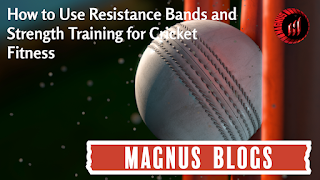The Air Pocket Debate: Do Modern Pads Trap Heat or Help With Ventilation?
In the world of cricket gear, one of the most overlooked yet critical pieces of equipment is the pad. Whether you're a batsman facing fast bowlers or a wicketkeeper crouching for long spells, your pads serve as both shield and comfort zone. However, as gear evolves, one pressing question remains: Do modern cricket pads actually ventilate better, or are they trapping more heat than before?
Understanding the Anatomy of Modern Pads
Today’s cricket pads are far from the simple cane-and-cotton builds of the past. Modern designs often incorporate:
-
High-density foam layers
-
Thermoplastic inserts
-
Mesh or microfiber lining
-
Air pockets or “channel zones” for airflow
-
Moisture-wicking outer shells
These additions promise improved protection, flexibility, and comfort—but not all players agree on whether they stay cool under pressure.
The Heat Problem
Pads are worn in some of the most intense and hot environments—be it a sweltering summer Test match or a high-humidity T20 evening. A common complaint, especially among amateur cricketers, is excess sweating and heat buildup, particularly around the shin and knee areas.
This leads to discomfort, distraction, and in some cases, skin irritation or cramping. The debate, therefore, centers on whether modern pads truly breathe or simply feel lighter but hotter.
The Role of Air Pockets: Ventilation or Insulation?
Many brands now include air channeling systems or vent zones in their pad designs. These are often marketed as innovations to improve ventilation, but the effectiveness depends heavily on:
-
Material layering: Some pads use multiple foam layers that, while reducing impact, restrict airflow.
-
Surface contact: The more surface area your leg touches inside the pad, the less room for air circulation.
-
Perforation and mesh integration: Some pads integrate tiny holes and mesh fabric to support ventilation—but their placement matters.
The paradox is that air pockets can sometimes insulate rather than ventilate, depending on temperature, body heat, and padding density.
Testing in Real-World Conditions
Field tests show a varied experience:
-
In hot climates: Pads with thick foam and synthetic lining tend to retain more heat, even if they are lightweight.
-
In cooler or windy environments: Air pocket designs help dissipate moisture and keep legs dry.
-
During extended play: Moisture-wicking liners do more for comfort than ventilation channels, especially in high-sweat zones.
Many professionals use custom-molded pads with breathable fabrics, which help—but these are often too expensive for average players.
What Can You Do?
If you're struggling with hot pads, here are a few tips:
-
Look for mesh-lined or perforated inner pads
-
Choose moisture-wicking materials over plain foam
-
Air your pads after every session
-
Use cooling sprays or wear breathable base layers underneath
Cricket bat types, Cricket equipment in usa, Cricket equipment store, Cricket gloves, Cricket helmet, Cricket kit bags, Cricket retailers, Durable cricket gloves, English willow bats, Icc approved helmets., Kashmir willow cricket bat, Latest kashmir willow bat
.png)

.png)
.png)
Comments
Post a Comment